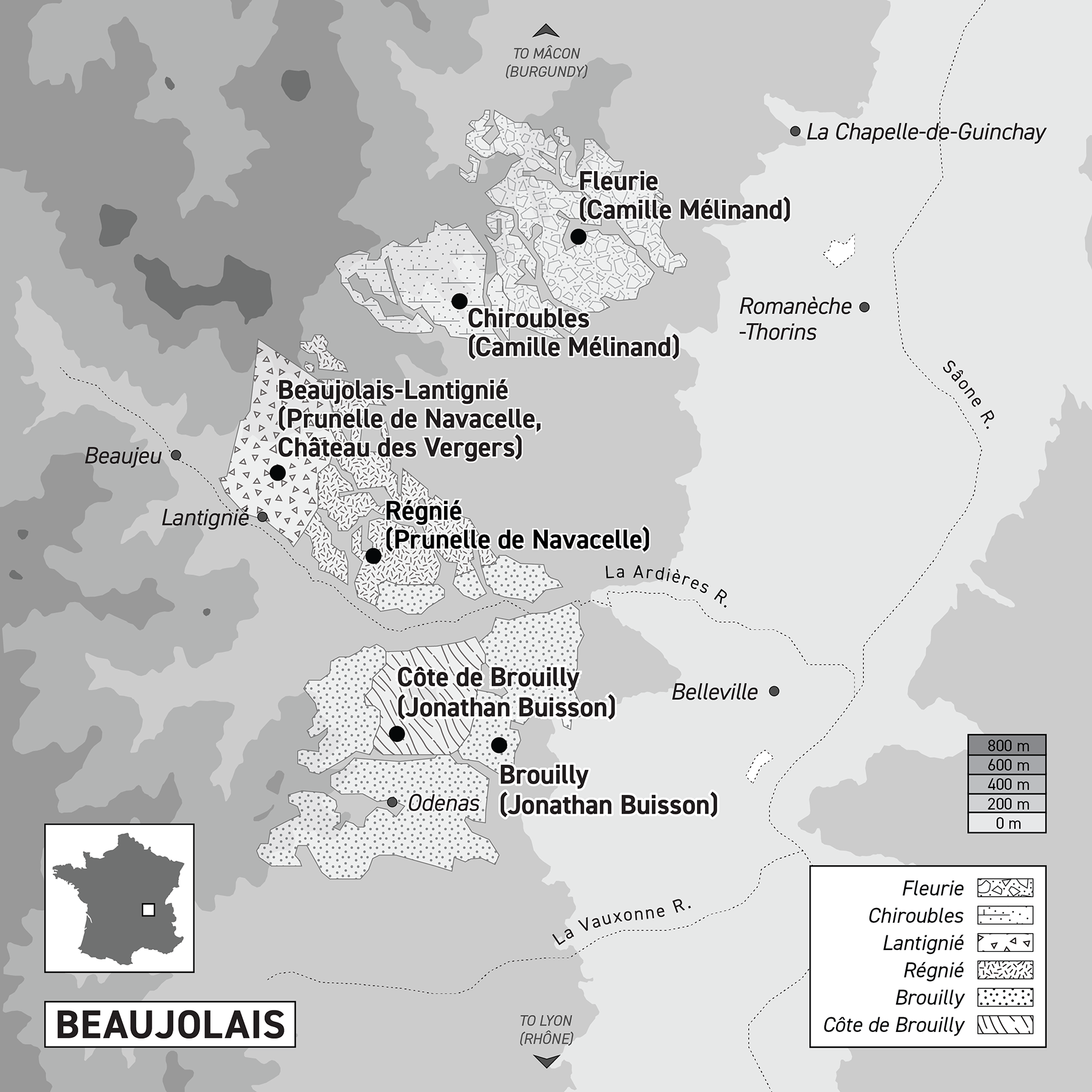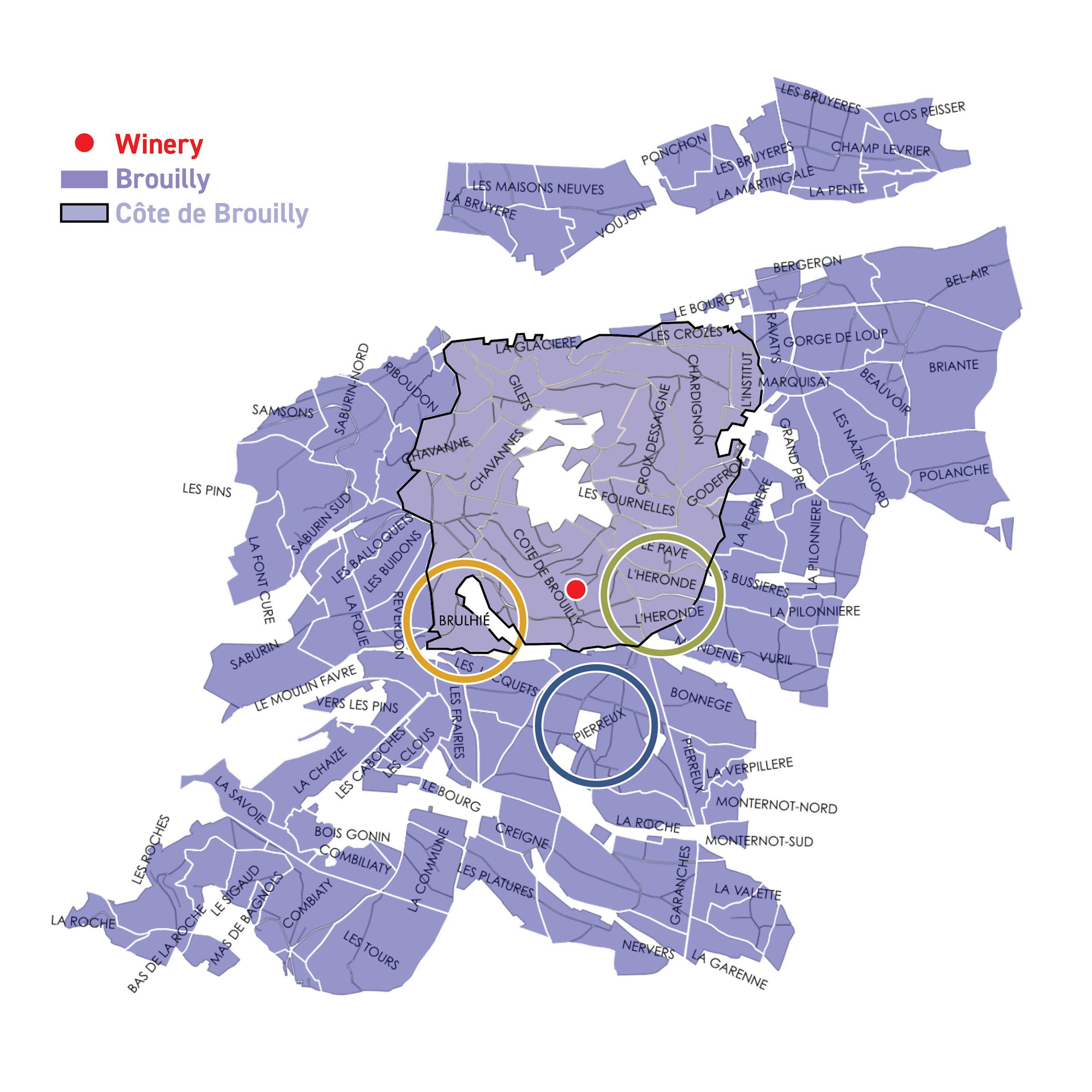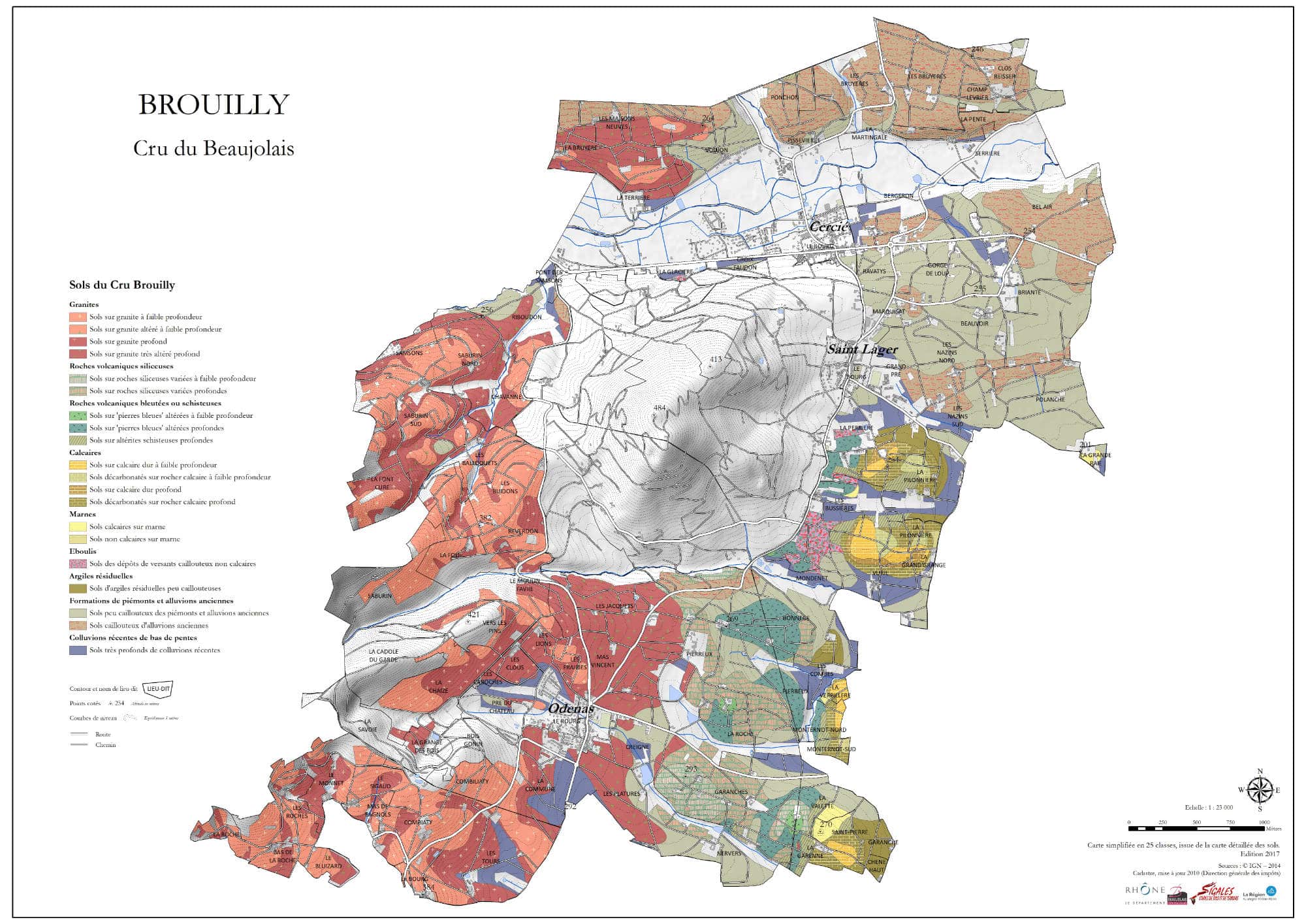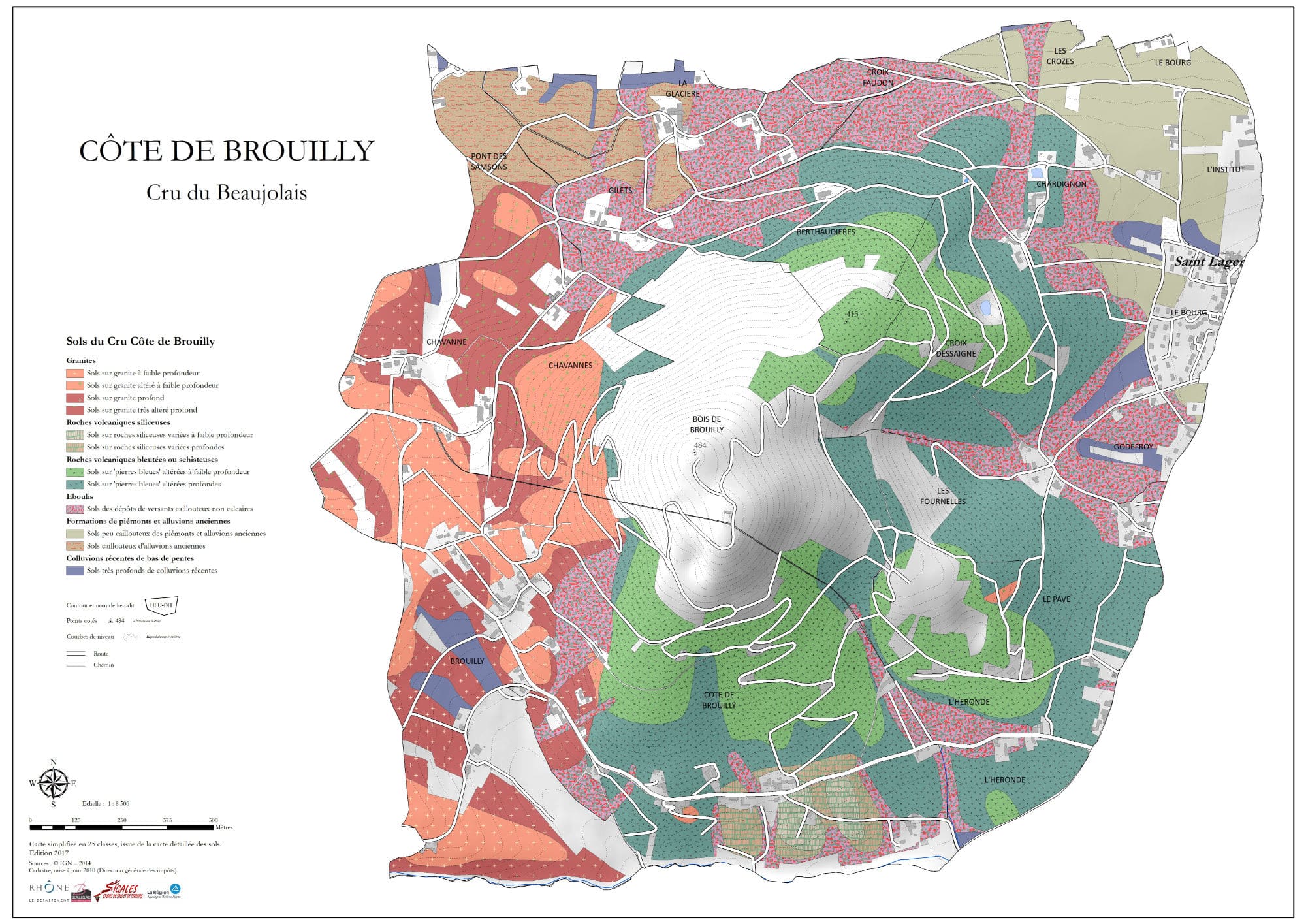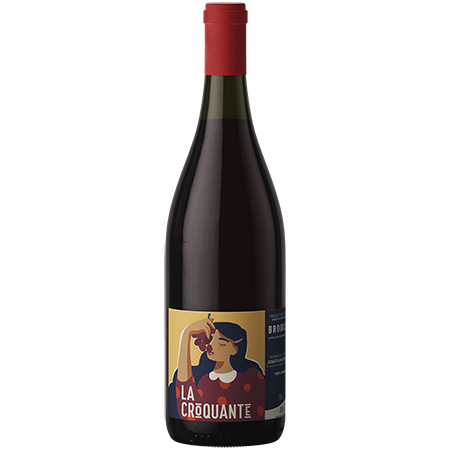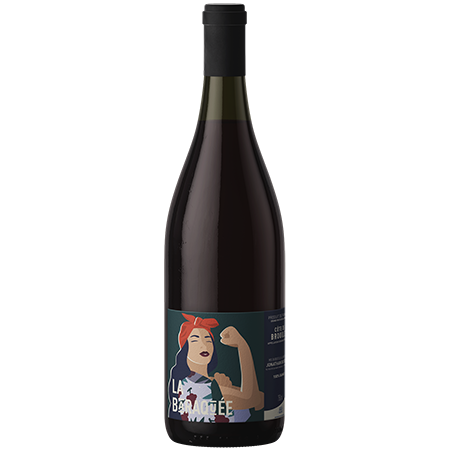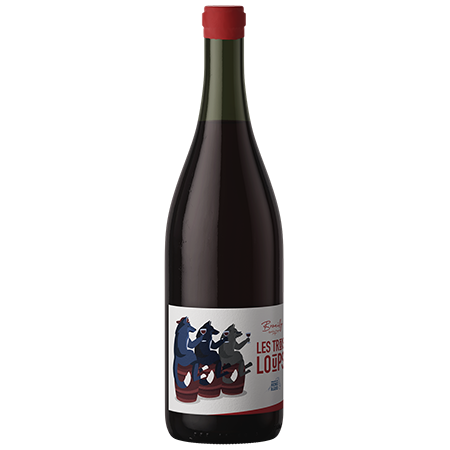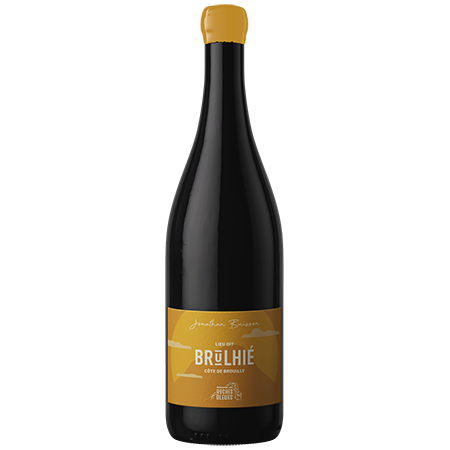Domaine Les Roches Bleues
One couldn’t ask for a better location than the position enjoyed by Jonathan Buisson and his wife Chloë…
and their Domaine Les Roches Bleues on the slopes of the majestic Mont Brouilly, in southern Beaujolais. The domain began in 1967 when Chloë’s grandparents, Annie and Louis Bassy, acquired a few hectares of vines with the strong desire to start their own wine domain. It was a daring idea at a time when very few growers owned their own vines and most small producers primarily sold to the large negociants, who reigned supreme. The family was quality-minded from the beginning, and the domain has seen lots of success in the decades since its founding. A fresh start came In 2017, when the young and charismatic third generation, Jonathan and Chloë, took over the estate, beginning the transformation of the domain around the production of organic and natural wines according to the principles of agroecology, with the incorporation of agroforestry techniques at the estate. The focus of the domaine is producing the purest, most delicious expression of terroirs as possible. Domaine Les Roches Bleues enjoys exceptional growing conditions, with the famous pierre bleue (diorite, a hard, blue-hued igneous rock typical of Côte de Brouilly) giving delicious wines with incredible energy, structure, and freshness.
Domaine Les Roches Bleues has 10 hectares of estate-owned gamay vines planted on steep slopes in the Côte de Brouilly and Brouilly appellations. The winery and vineyards sit on the southern side of Mont Brouilly between neighbors Château Thivin and Pierre Cotton. Les Roches Bleues refers to the famous pierre bleue (diorite), a hard, blue-hued igneous rock typical of Côte de Brouilly, found abundantly in their vineyards. Even though volcanoes have not been present in the area, the igneous stone was unearthed by the formation of the Alps when it was pushed up from beneath the sea and exposed at the surface. Côte de Brouilly also takes advantage of the superior drainage and exposure offered by the steep slopes. Mont Brouilly’s incredibly sharp incline and unique soils produce some of the most mineral, ageable wines of the entire Beaujolais region.
Jonathan farms all of his vineyards organically, and his vineyards were certified in 2021. He does not use any chemicals in the vineyard or winery. Beyond organics, he is working with the systems of agroecology and agroforestry (plant cover, hedges, planting trees within plots). The goal is to put the tree at the heart of the vineyard system to improve the quality of the soil, the environment, and fight climate change. The trees and hedges at the periphery of the vineyards also provide a “highway” for the animals and insects to connect to the forest at the top of the mountain, as well as find their way into his neighbor’s vineyards that are connected to the same system. He utilizes wild grasses in the vineyard to help with water retention and guard against erosion. The grasses also lower the temperature in the vineyards by an average of ten degrees on the ground.
The average age of his vines is 50 – 65 years, with some vines of 100 years old. He is also planting young vines and switching to cordon training, which is better for organic and biodynamic farming by raising the vines up off the ground. This method allows for more aeration and does not trap humidity close to the ground, which in turn negates the need for chemical inputs.
Grapes are always hand-harvested in small boxes to keep the integrity of the grape clusters whole. Vineyards are collected and vinified separately. In the cellar alcoholic fermentation is carried out in the traditional large cement vats common in Beaujolais with thermoregulation, followed by ageing in traditional old foudres from six to 12 months. Vinification is carried out in the most natural way possible, with carbonic maceration and indigenous yeasts, and with very limited sulfur added (if any at all) at bottling, depending on the cuvée and vintage. Wines are bottled without fining and little-to-no filtration.
The striking labels were created by Jonathan’s good friend and artist, Astrid Amadieu. They tell a story of the personality and flavor progression of the different cuvées while celebrating women, as imagined by Astrid. She joined Jonathan for two harvests at Domaine Les Roches Bleues in 2010 and 2011, where she would make portraits of the grape pickers during her evenings there.
We are thrilled to work with Domaine Les Roches Bleues and Jonathan Buisson, who is among the most exciting new growers in Beaujolais. He is friends with and connected to other young vigneronnes in our book like Prunelle de Navacelle and Cosima Bassouls, all of whom are part of a community who are working together, pooling resources, trading expertise, equipment, and other support. This communal atmosphere and openness to change, paired with progressive environmentalism and social responsibility, has created an electric feeling in the region.

